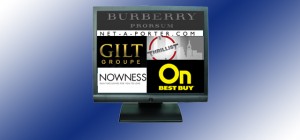 Eye-opening column this week by New York Times media critic David Carr. It addresses the emerging trend of brands starting their own publications rather than advertising in traditional ones:
Eye-opening column this week by New York Times media critic David Carr. It addresses the emerging trend of brands starting their own publications rather than advertising in traditional ones:
Luxury brands have always advertised in the likes of Vogue, Esquire and Architectural Digest and tried to impress their editors enough to get mentioned in the editorial pages, as well. But now companies like Richemont are reaching out directly to consumers — and cutting out the middlemen.
And brands are becoming better and better at creating seamless hybrids that make the marketing go over easy. As Carr notes:
Lucky, Condé Nast’s shopping magazine, neatly foresaw this future of editorial and advertising elements blending into a single reader experience, but the company did not take the last step of making it a place that people could buy from. Adam Lavelle, the chief strategy office of iCrossing, the digital marketing agency owned by Hearst, believes that those old lines are fast disappearing.
“The days when you only had someone put together a television or a magazine ad out there and then waited three months to see if it worked are over,” he said. “The old line separating church and state is not gone, but is definitely a more blurry one. And brands that are authentic, not shameless or opportunistic, have a chance to create content that people will pay attention to.”
Wait: Isn’t marketing in sheep’s clothing by definition inauthentic and opportunistic?
As for shameless, we’ll leave judging that to you.
—
Computer Image Credit: Rawich / FreeDigitalPhotos.net
John R. Carroll is media analyst for NPR's Here & Now and senior news analyst for WBUR in Boston. He also writes at Campaign Outsider and It's Good to Live in a Two-Daily Town.
John R. Carroll has 305 post(s) on Sneak Adtack
2 comments
Tweets that mention Now Hiring: VP/Optometry for Media Mashups -- Topsy.com says:
Jan 20, 2011
[…] This post was mentioned on Twitter by John Carroll, John Carroll. John Carroll said: Blog post: Now Hiring: VP/Optometry for Media Mashups http://sneakadtack.com/?p=1111 […]
Brands in Sheep’s Clothing says:
Jan 22, 2011
[…] already called for a VP/Optometry for the new print publications that brands are producing to replace mainstream media as advertising […]